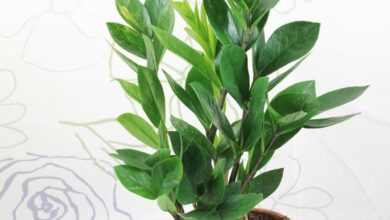Pests of Anthurium plants – Insect control on Anthuriums
Anthurium is a very popular tropical ornament. Its large, brightly coloured spathes are the most remarkable feature of this plant and are easy to maintain, requiring a minimum of care. However, Anthurium pests are a constant problem, especially when plants are grown outdoors. Scale insects, aphids, thrips, mealybugs and spider mites are common pests that can be found on indoor and tropical plants. Anthurium control begins by recognizing the insects infesting the plant and taking immediate action to eradicate them.
Anthurium plant pests
Anthurium, or flamingo flowers, is native to South America and there are more than 100 commercial varieties of this plant. The unique floral structure of this species makes it a curiosity plant and has also made it a popular houseplant. The flamingo flower is a shade plant that needs good drainage and soil rich in organic matter. Pest infestations usually begin in summer, when the climate is warm and temperatures are high. Anthuriums in poor condition can be decimated by pests because they are stressed and cannot control invading insects.
Anthurium pests are mainly sucking insects. Their thick leaves are not usually bothered by chewing pests. Harmful anthuriums gradually eliminate the sap from the plant and reduce the health of the flamingo flower over time. The effects may be difficult to detect initially, as these types of insects have a slow effect on plant health, but often the invaders themselves can be detected.
Anthurium aphid pests can be black, grey, white, red, green or brown. They are crawling insects, which push their feeding mouths into the flesh of the plant and extract the sap.
Thrips and spider mites, which are too small to be seen with the naked eye, also feed on these plants. Spider mites leave behind small webs to identify their presence, while a piece of white paper placed under the plant while shaking it can show you the tiny black thrips (as well as the mites).
The scale has a hard body and adheres tightly to the plant parts while sucking up life. Mealybugs are more common in warm regions and are pests of many ornamental plants, as are cotton mites.
Symptoms of Anthurium plague
Anthurium control begins with the correct identification of invaders. Sucking insects, such as aphids, leave mottled leaves that become deformed over time. They may also be accompanied by ants, which like the sweet, sticky melon left by aphids.
Insects such as scales cause plant weakness and can be visually identified. They have a hard, rough shell and tiny legs. The yellow spot on the leaves is a telltale sign of the presence of spider mites. Thrips also cause leaf spotting and re-feeding, as do scale insects.
All insects feed by removing plant fluids, which are rich in carbohydrates and are the fuel for their growth. Plants generally wilt, limp and do not produce new shoots. It is essential to begin an anthurium control program as early as possible to avoid loss of plant vigour and potential damage to leaves and stems.
Insect control in anthurium
Anthurium insects can be controlled naturally by short, sharp jets of water that displace and often drown the parasites. Stubborn insects can react to soap or horticultural oil sprays that are natural and do not harm the plant.
You can clean the scale by hand or use a pyrethrum-based insecticide. They are naturally based and the active ingredient comes from the chrysanthemum plants. Scale insects are very difficult to control and may require a spray based on malathion or containing dimethoate. Constant monitoring of plant pests is the best starting point for Antruium control and helps to avoid serious damage in case of large infestations.

